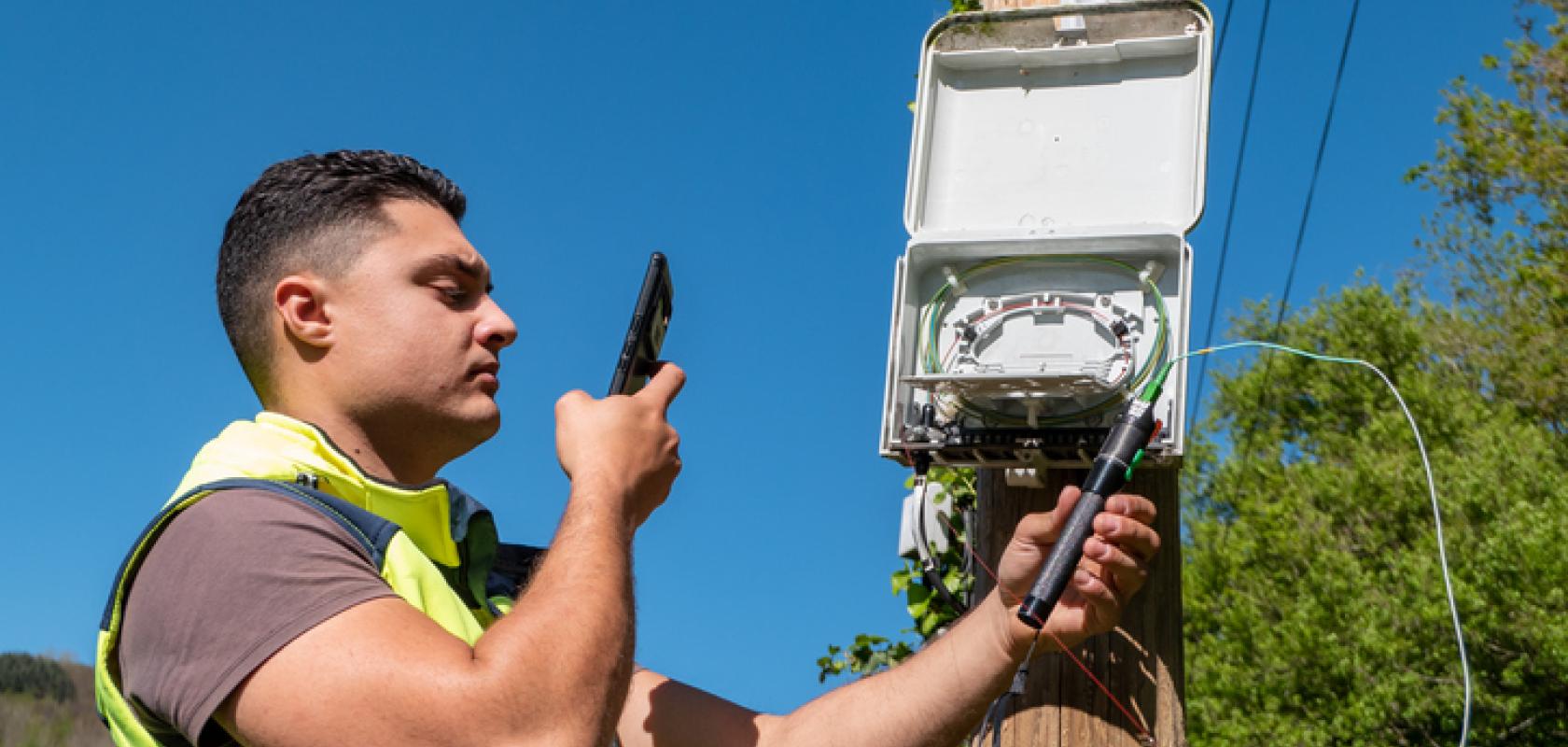The fibre optic industry faces mounting pressure to deliver networks faster whilst maintaining quality standards. Poor construction practices can render up to 30% of customer lines unusable, creating costly delays and frustrated subscribers.
Here, Deepomatic’s François-Xavier Potier reveals how Visual AI technology is addressing these challenges and helping to revolutionise field operations.
Are there any particular challenges that Deepomatic is aiming to solve in fibre network construction?
The main challenge isn't the fibre technology itself – telecom operators know how to deploy it. The real issue is ensuring that they get the expected return on investment at the right time. This comes down to controlling quality throughout the fibre construction process and properly documenting the network in your system of record.
If your network model is disconnected from the reality of what's in the field, it leads to inefficiencies in how you operate your network, from asset management to field crew management.
Deepomatic's AI computer vision – also called Visual AI – aims to improve the way field engineers build fibre networks and bridge the gap between the field and the network model.
What are some of the real-world consequences of poor construction quality?
The way a fibre network is built has direct consequences on subscribers' quality of experience once they're connected to the network. We've seen cases where up to 30% of customer lines couldn't be activated after construction because they weren't properly built. That's not just frustrating for customers – it's costly. Fixing issues after the fact is much more expensive than correcting errors on the spot and doing the work right the first time. Ultimately, poor quality in fibre construction hinders operators' revenue as it generates delays in the rollout.
Why is documentation such a pain point for field teams?
Field workers operate under pressure – tight deadlines, bad weather, long days. When you've just finished a trench on a rainy Saturday, stopping to take photos and fill out documentation isn't top of mind. The challenge is making the documentation process easy and valuable, not just another task that disrupts their workflow.
How can teams improve the quality of field documentation?
First, it needs to be simple. But more importantly, it needs to be meaningful. If documentation is verified and acted upon – if there's a real feedback loop – then field teams understand its value. They're not just taking photos to tick a box; they're contributing to network quality.
What's a common misconception about as-built documentation?
People often think as-built documentation has to exactly match the original network plan, but that's not realistic. Conditions on the ground change, and teams need to adapt. For instance, they may have to dig a fibre trench in a slightly different location compared to where it's planned in the design, as the ground conditions don't allow it to be there.
The requirement isn't to have as-built documentation that matches the original design – it's to have it aligned with what's actually built in the field. What's critical is that the changes are documented and shared back with design teams so the plans reflect reality.
How does Visual AI help address these challenges?
Visual AI ensures consistency across teams and deployment areas. It checks the conformity of photos captured by telecom engineers by verifying their time, location, and content, so documentation becomes trustworthy. It also extracts asset data automatically. For example, it can measure trench depth and width, count splices in distribution points, or read the reference on equipment labels. This data can then populate the operator's system of record to ensure that the network model matches reality.
When it comes to the quality challenges I mentioned earlier, Visual AI brings tremendous value by automating build work inspection. It analyses the photos to see if the tasks that were carried out follow the standards. Was the fibre cable connected to the right port? Are the colours of the fibre splices correct? Any error or oversight is flagged so that the worker can correct it.
Can you give an example of a real-world deployment of this technology?
Yes, Swisscom is a great example. They work with several subcontractors, each with their own tools. But by implementing Deepomatic, Swisscom created a standardised way to document every asset. Each work order includes specific quality checks at asset levels. Take the example of a fibre manhole. The photos taken by the worker will show its environment, the manhole globally, and what it contains, such as a sleeve and the cassettes in it. It's so much easier to document all these elements and verify the conformity of workmanship using AI than through manual entry forms.
What impact did this have for Swisscom?
It allowed them to verify quality remotely. They no longer need to send people to the field to check all assets built. The telecom operator was able to multiply its quality inspection capacity by three, as they're now running more build works without having increased their quality assurance teams. It also improved their GIS updates, because the photo documentation made it easy to identify and address discrepancies in the network layout.
What are the keys to a successful Visual AI implementation?
The most important thing is defining the process before deploying the technology. Everyone – operators, subcontractors, QA teams – needs to be aligned on what quality means and how it's measured. Otherwise, even the best tools won't help.
How does this technology fit into existing construction and documentation ecosystems?
Integration is key. You have design tools, geospatial network management systems, project management systems – all of them need to talk to each other. Visual AI fits into this by feeding verified documentation, pictures, extracted data and quality checks into those systems. Done right, this creates a near-digital twin of your fibre network.
What does the future hold for Visual AI in this space?
We'll see deeper integration with geospatial network management and project management tools, more automation, and faster feedback cycles. That means quicker issue detection, better collaboration, and reduced overhead. AI isn't here to replace humans – it's here to make teams faster and more effective.
What are your final recommendations for fibre operators?
Start with the process: define your quality checks, align with subcontractors, and make documentation simple for field teams. Build in feedback loops. And invest in reliable survey data – it reduces surprises later. With those foundations in place, AI can deliver real, measurable value.


